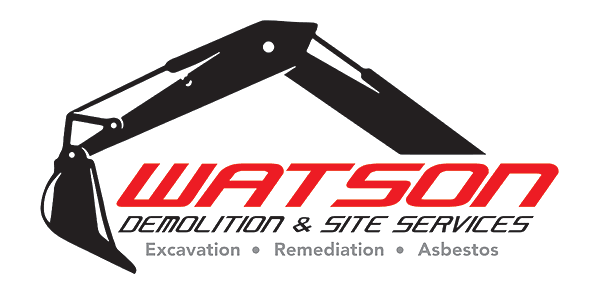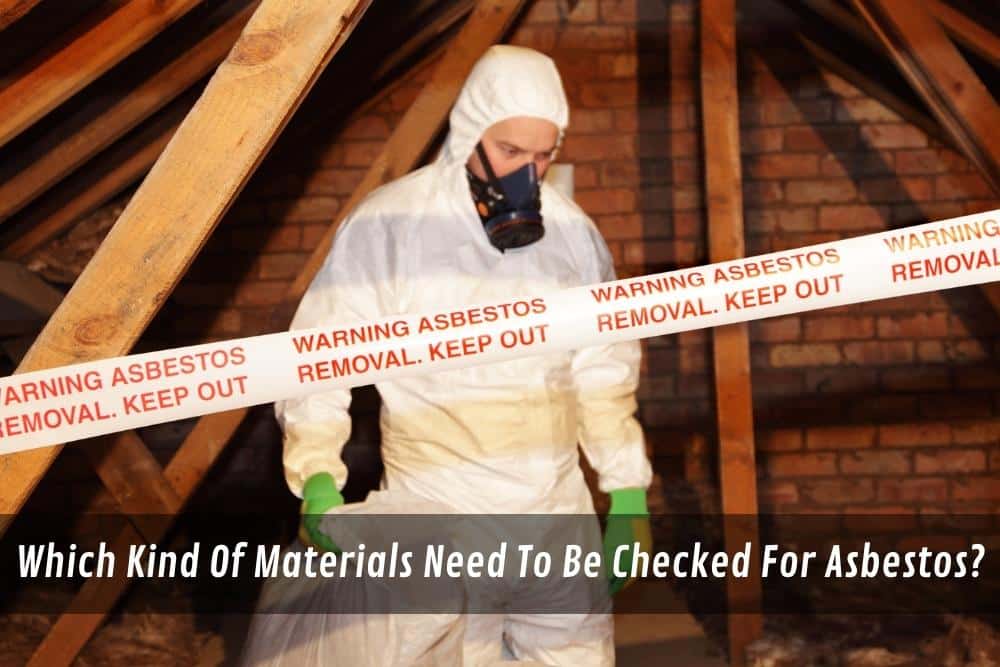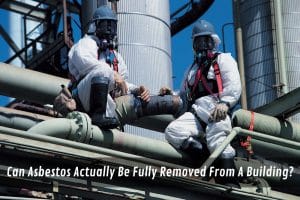Asbestos testing is an essential process that helps determine the presence of asbestos in various materials. Asbestos is a naturally occurring mineral widely used in construction due to its excellent fire-retardant properties and durability. However, prolonged asbestos exposure can result in severe health complications, such as lung cancer and biphasic mesothelioma. Therefore, it’s crucial to identify and remove asbestos containing materials to ensure the safety of people who may come into contact with them. In this blog post, we will explore the types of materials that need to be checked for asbestos and the importance of asbestos testing in maintaining a safe and healthy environment.
Health risks associated with asbestos testing
Asbestos is a naturally-occurring mineral that has served a significant role in the construction and manufacturing industry due to its exceptional resistance to heat, fire, and chemicals. However, it is highly toxic and is now recognised as a leading cause of severe health problems.
Asbestos exposure can cause a range of health problems, including:
-
Mesothelioma
This is a rare and aggressive form of cancer that affects the lining of the lungs, chest, abdomen, and other organs. It is caused almost exclusively by asbestos exposure and has a poor prognosis.
-
Lung cancer
Asbestos exposure can increase the risk of lung cancer, particularly in smokers.
-
Asbestosis
This is a chronic lung disease that is caused by the scarring of lung tissue due to asbestos. It can cause shortness of breath, coughing, chest pain, and respiratory failure.
-
Pleural thickening
This is a condition where the lining of the lungs becomes thick and stiff, making it difficult to breathe.
-
Pleural effusion
This is a buildup of fluid in the lining of the lungs, which can cause shortness of breath and chest pain.
The risk of developing these health problems depends on the duration and intensity of asbestos exposure, as well as individual factors such as age, gender, and smoking history. It is important to take precautions to prevent asbestos exposure, such as avoiding DIY removal of asbestos containing materials and using protective equipment when working in environments where asbestos may be present.
What are some instances of building materials that may contain asbestos?
Examples of building materials that may contain asbestos include:
- Asbestos cement products such as asbestos cement sheeting and asbestos cement roofing
- Vinyl floor tiles
- Insulation materials such as pipe insulation, boiler insulation, and duct insulation
- Textured paints and coatings
- Ceiling tiles and acoustic panels
- Gaskets, seals, and other packing materials
- Fireproofing materials
- Electrical wiring insulation
- Plaster and joint compounds
- Certain types of roofing felt and shingles
It is important to note that the presence of asbestos in building materials cannot be determined by visual inspection alone, and asbestos testing by a licenced asbestos assessor may be necessary to determine the levels of asbestos and assess the risk of asbestos exposure.
Do you know the proper techniques for identifying materials that contain asbestos?
It is important to remember that asbestos can’t be identified just by looking at it. In most cases, if you want to determine if a material contains asbestos, you’ll need to have it tested by a qualified laboratory. Furthermore, it is not safe to assume that just because a material looks like it contains asbestos, it does contain asbestos.
Visual inspection alone cannot be relied upon for identification purposes. It should only be used in combination with other methods such as sampling and testing. If you are unsure about whether or not a material contains asbestos, contact your local authorities or an experienced professional to have the material tested.
When dealing with any material that may contain asbestos, it is important to take the necessary precautions to avoid exposure. The initial task involves identifying any materials that may potentially contain asbestos. This can be done through visual inspection or testing by a qualified professional.
Once the material is identified, measures should be taken to reduce the risk of exposure. For example, if the material is in good condition and not likely to release asbestos fibres into the air. It can be left in place and monitored for signs of wear and tear. If there is concern that the material may become damaged or disturbed, it should be removed by local health and safety regulations.
If removal of asbestos-containing material is necessary, it should be done by a professional asbestos removal firm. They are trained and certified to work with asbestos safely.
What is the importance of professional asbestos testing and removal?
Here are some key points on the importance of professional asbestos testing and removal:
-
Safety
Asbestos can pose serious health risks if it is not handled properly. Professionals ensure that the material is safely detected and removed, minimising the risk of exposure to asbestos.
-
Compliance
Depending on your location, there may be regulations and laws in place that require asbestos testing and removal to be carried out by licenced professionals. Hiring a professional ensures that you are in compliance with these regulations and avoiding potential legal consequences.
-
Accuracy
Professional asbestos testing is conducted by licenced assessors. They have the expertise and equipment to accurately detect the presence of asbestos in materials. DIY testing kits or methods may not be as accurate, potentially leading to missed asbestos containing materials.
-
Efficiency
Professional asbestos removalists have the training, experience, and equipment to efficiently remove asbestos materials from your property. Attempting to remove asbestos on your own can be time-consuming and dangerous.
-
Peace of mind
Hiring professionals to conduct asbestos removal and testing gives you peace of mind that the work is being done safely and properly. You and those around you are protected from the potential health risks associated with asbestos exposure.
Professional asbestos removal is important to protect the health of those who may come into contact with asbestos materials. Seeking the services of qualified and experienced professionals is recommended. This is to ensure that asbestos removal and testing are carried out safely and efficiently.
Conclusion
In summary, asbestos is a hazardous material that was widely used in building materials and products. Asbestos exposure can cause serious health problems. It can take years for asbestos-related diseases to develop in you, and there are no effective treatments for these diseases, highlighting the importance of preventing asbestos exposure.
Asbestos warning signs should be taken seriously, and any building or material suspected of containing asbestos should be tested by a licenced asbestos assessor. You should hire professional asbestos removalists to safely remove and dispose of the asbestos containing materials if they find asbestos. It is important to follow proper safety protocols and procedures to minimise the risk of exposure to asbestos fibres during the testing and removal process.
You should not take asbestos testing and removal lightly. You should seek the services of qualified and experienced professionals. They have the necessary training, equipment, and protective gear to carry out the work safely and efficiently. By taking the necessary precautions and heeding the warning signs, we can protect ourselves and future generations from the dangers of asbestos exposure.
If you suspect that your building or materials may contain asbestos, it is important to take action immediately. To protect yourself and others from potential health risks. Get in touch with Watson Demolition & Site Services today to schedule an asbestos assessment or removal. Our team of licenced asbestos assessors and removalists has the experience and knowledge to detect and remove asbestos from your building or materials in a safe and timely manner. We are committed to providing the highest level of service and ensuring the safety and well-being of our clients.



